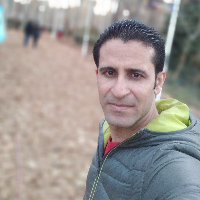Evaluation of Spatial-Temporal Comparisons of Water Quality Parameters and Health of Ziarat River using NSFWQI Quality Index and Statistical Analysis
Author(s):
Article Type:
Research/Original Article (دارای رتبه معتبر)
Abstract:
Investigation of water quality variations in rivers is one of the important criteria for determining the health of watershed. Quantitative and qualitative monitoring plays an important role in sustainable management of river ecosystems. In this regard, the present study was carried out to evaluate the water quality of Ziarat River in Golestan Province, after water sampling from six stations along the river from December 2016 to July 2017 using NSFWQI index. Correlation analysis and cluster analysis were also used to find out the relationships between physical and chemical parameters of water. The results were compared with the standard values of the World Health Organization (WHO) and US Environmental Protection Agency (EPA). The results of this study shows higher values of BOD, Na, Ca and PO4 at the downstream station, as compared to the ones in the upstream stations due to reciving wastewater from different sources. Statistical analysis indicates that there is a significant and strong relationship between some physical and chemical parameters of the river. The results showed that the mean concentration of DO, TDS, Cl, Na, Po4 and NO3 are 5.4, 627.5, 110.02, 48.5 and 9.25 mg/l respectively, and the mean value of Electrical Conductivity was 1028 μs/cm. The comparison of NSFWQI values at the six stations of Ziarat River in different seasons indicated that the first station (Tolboneh, Upstream) had the highest value (55) in May, and the sixth station (Downstream) had the lowest value (35) in July. According to this index, the river water quality is medium in the upstream station and bad in the midstream and downstream stations. The results interpretation showed from upstream toward downstream stations, the pollution load increases and the water quality decreases. Therefore, in order to manage the river water quality, the focus should be done on emission control of point source and nonpoint sourec pollusions. The results of this study provide the opportunity for decision on monitoring and controlling pollutant sources and the proper measures for restoration of river ecosystem for effective use in various applications. Finally, according to the results obtained from NSFWQI index, it can be said that the NSFWQI index describes the quality of water resources easily and reliably and its application is usefull for water resources management of other rivers.
Keywords:
Language:
Persian
Published:
Iranian Journal of Soil and Water Research, Volume:51 Issue: 6, 2020
Pages:
1353 to 1372
https://www.magiran.com/p2193655
سامانه نویسندگان
مقالات دیگری از این نویسنده (گان)
-
The effect of Biochar and Irrigation Water Quality on Maize Yield and Water Productivity
Mustafa Zanjani, Mahmoud Mashal, Masoud Pourgholam-Amiji *
Iranian Journal of Irrigation & Drainage, -
The impact of magnetized water under combined drought and salinity stress conditions on the qualitative performance of strawberries
Mojtaba Khoshravesh *, Masoud Pourgholam-Amiji, Reza Norooz-Valashedi, Hadi Yeilaghi
Iranian Journal of Soil and Water Research, -
Prioritizing Indicators of Sustainable Urban Development Using the Delphi Method (Case Study: Mashhad City)
, Abdolrassoul Salman Mahiny *, Alireza Mikaeili Tabrizi, Thomas Houet
Environment and Development Journal, -
Study Indicators of Environmental Flow and PHABSIM EcoHydraulic Model to Estimation of Ecological Optimal Release Flow Range from Latyan Dam Reservoir
MohammadHasan Naderi, Marzieh Bagheri Khaneghahi, Meysam Salarijazi
Irrigation and Drainage Structures Engineering Research, -
Flood risk analysis using random forest machine learning method (Case study: Mashhad city)
, Abdulrassoul Salman Mahiny *, Alireza Mikaeili Tabrizi, Thomas Houet
Iranian Journal of Eco Hydrology, -
Investigating the Relationships between Hydromorphological and Hydrological Characteristics on Habitat Suitability under Scenarios of Changing the Environmental Flow Regime based on Kordan River Ecosystem Restoration
MohammadHasan Naderi *, , Mojtaba Khoshravesh, Meysam Salarijazi, Efat Mohammadi, Mohammad Gholizade
Iranian Journal of Soil and Water Research,




